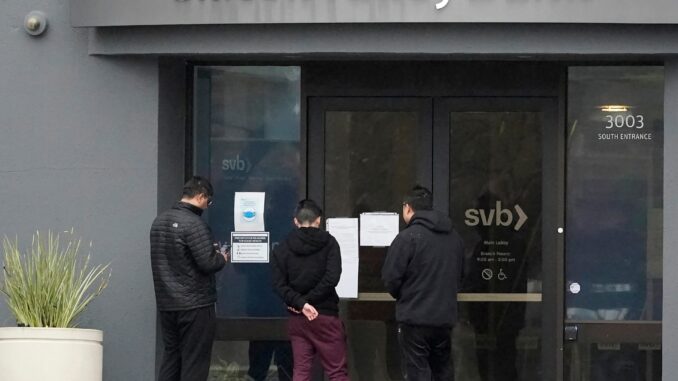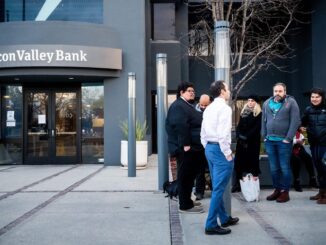
The United States government has announced it will guarantee deposits at failed Silicon Valley Bank (SVB), as financial regulators rush to alleviate fears the tech-focused lender’s collapse could set off a broader financial crisis.
In a statement on Sunday, the US Treasury Department, Federal Reserve and Federal Deposit Insurance Corporation (FDIC) said that all customers would be protected and be able to fully access their funds following the bank’s collapse.
“Today we are taking decisive actions to protect the US economy by strengthening public confidence in our banking system,” the agencies said in a joint statement.
“This step will ensure that the US banking system continues to perform its vital roles of protecting deposits and providing access to credit to households and businesses in a manner that promotes strong and sustainable economic growth.”
But regulators stopped short of announcing a bailout similar to those provided to banks during the 2007-2008 financial crisis, insisting that investors and senior management would suffer losses and taxpayers would not be called on to prop up the institution.
“Let me be clear that during the financial crisis, there were investors and owners of systemic large banks that were bailed out, and the reforms that have been put in place means that we’re not going to do that again,” US Treasury Secretary Janet Yellen said during an interview with CBS before the announcement of the measures. “But we are concerned about depositors and are focused on trying to meet their needs.”
US President Joe Biden said on Sunday that he was committed to holding those responsible for “this mess” accountable and would continue to strengthen oversight of the country’s largest banks.
“Tomorrow morning, I will deliver remarks on how we will maintain a resilient banking system to protect our historic economic recovery,” Biden said.
US regulators have been scrambling to find a buyer for Santa Clara-based SVB, the country’s 16-largest bank, since seizing the bank’s assets on Friday following the mass withdrawal of funds by depositors.
The bank’s financial health had been under scrutiny following its announcement of plans to raise $1.75bn in capital after the loss-making sale of bonds.
SVB, whose business heavily catered to technology workers and venture capital-backed companies, had approximately $200bn in assets at the time of its collapse. The bank’s failure is the second-largest banking collapse in US history after the 2008 implosion of Washington Mutual.
In an indication of the fallout, regulators said New York-based Signature Bank had also failed and was being seized, marking the third-largest bank failure in US history.
Regulators said a “similar systemic risk exception” would be extended to Signature Bank to guarantee all deposits at the lender.
Financial markets rose in early Asian trading following the announcement, although questions about potential buyers for the banks remained unanswered.
Some observers had warned that bank customers could make runs on other financial institutions and potentially set off a broader financial crisis if the government did not intervene to protect depositors, although economists have stressed that SVB’s collapse is significantly different to the failure of Lehman Brothers that precipitated the 2007-08 financial crisis.
Campbell R Harvey, a professor at Duke University’s Fuqua School of Business, said SVB was not among the biggest banks and had failed for different reasons than institutions that collapsed in 2007-08.
“If you think about the global financial crisis, there were a number of banks that were at risk at the same time and we started to learn about them and these were not small players — these were big players and they were all highly correlated,” Harvey told Al Jazeera.
“This bank is different. It’s not in the top tier. Most people never heard about it but it’s been focused on tech investors in Silicon Valley … so I don’t see the similarities with 2007 at all.”
Harvey said that while multiple banks were extremely over-leveraged in the run-up to the 2007-08 crisis, SVB had failed due to its overreliance on the tech sector, which has lost trillions of dollars in value over the last year.
“SVP is a story about an undiversified loan book,” he said. “That’s different.”
US regulators move to protect depositors amid concerns of broader fallout from second-largest bank failure in history.
ENB Top News
ENB
Energy Dashboard
ENB Podcast
ENB Substack



